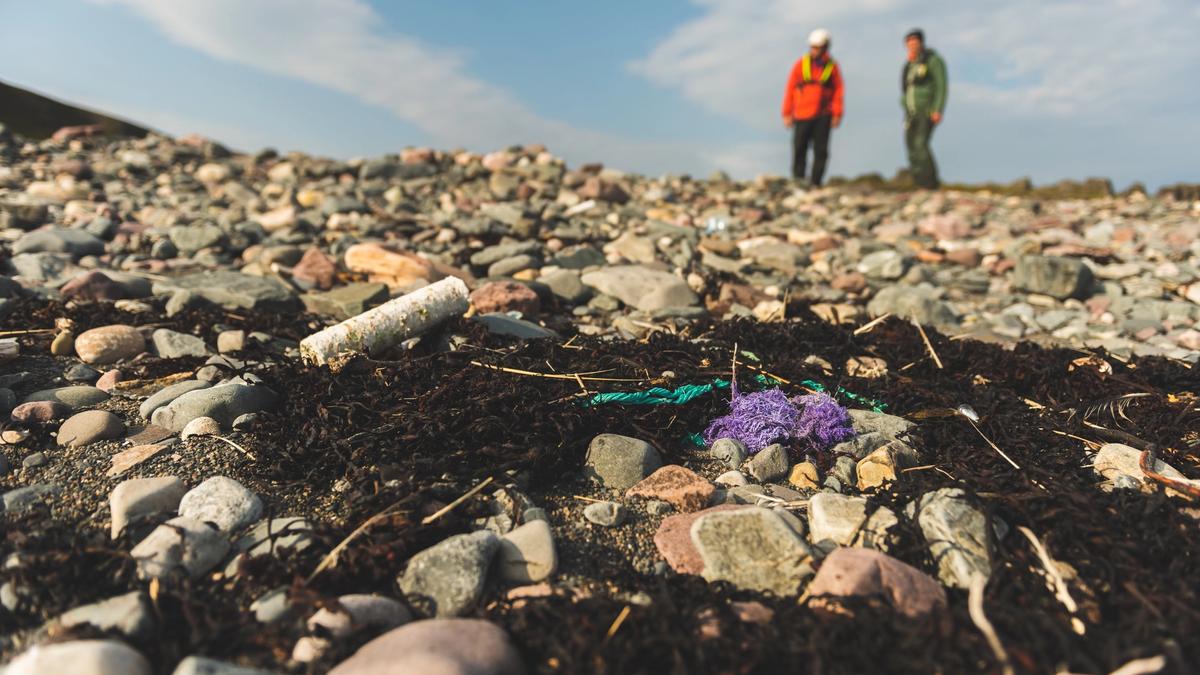It is estimated that there is between 75 and 199 million tonnes of plastic in the ocean. Without the necessary measures to reduce the scope of such plastic, this volume could triple by 2040.
During the period between 1950 and 2017, approximately 9,200 million metric tonnes of plastic were produced worldwide. Of this, nearly 7,000 million tonnes have ended up as waste. Researchers have estimated that plastic waste that ends up in the sea from people living closer than 50 km from the coast accounts for somewhere between 4.8 million and 12.7 million tonnes each year.
Several researchers have estimated that the total volume of plastic in the ocean is between 75 and 199 million tonnes. The production of plastic will likely continue to increase in the coming years and, without the necessary measures to reduce the discharge of plastic to nature, this volume could triple by 2040 (compared to 2016 figures). Historical estimates of the volume and weight of plastic have been based on the volume of waste generated by each resident and how large a proportion of this waste is plastic.
Uncertain claims regarding scope and sources
A 2016 report presented the claim that there would be more plastic than fish in the ocean by 2050 when measured by weight if the international community fails to take the necessary action to stop the inflow of plastic. This generated a lot of media attention, but doubts over the claim have since arisen. This is due, among other things, to the fact that there is great uncertainty surrounding the methods used to estimate both the amount of fish in the sea and the amount of plastic entering the ocean. Another often discussed claim is that 90% of the litter in the world’s seas originates from just ten rivers. This claim may give the impression that the ten rivers contribute 90% of all plastic that enters the sea, which is not true. What is true is that 90% of the plastic that is carried by rivers originates from these ten rivers. Plastic that ends up in the sea arrives in a number of different ways - it is either dumped directly, carried from land by the wind or it is lost in connection with shipping, fishing or other activities at sea. Nevertheless, rivers do contribute to transporting significant amounts of plastic from land to the oceans.
Most waste ends up on the seabed
Mapping of marine litter on the surface of the sea, in the water and on the seabed has been conducted along the Norwegian coast and in the Barents Sea. In one study published in 2018, researchers mapped marine litter in the Barents Sea during the period from 2010 to 2016. During this period, findings of marine litter were registered in connection with fishing using bottom trawls and pelagic trawls in the upper parts of the water, while findings of floating marine waste on the surface of the sea were also recorded. Marine waste is observed throughout the Barents Sea and factors such as waste density, ocean currents and depth are central to how waste is distributed in the water column. Plastic was the dominant waste type in relation to the number of observations and, based on the findings in the study, it was estimated that the average volume of plastic in the upper 60 m of the Barents Sea was 0.011mg/m3 and 2.9 kg/km2 on the seabed [3]. It is difficult to estimate the volume of litter in the open seas and there is great uncertainty linked to the data from such observations. Nevertheless, there is plenty to indicate that the majority of litter can be found on the seabed and that only a small proportion of waste is found on the surface or drifts ashore onto the beaches along the coast.


